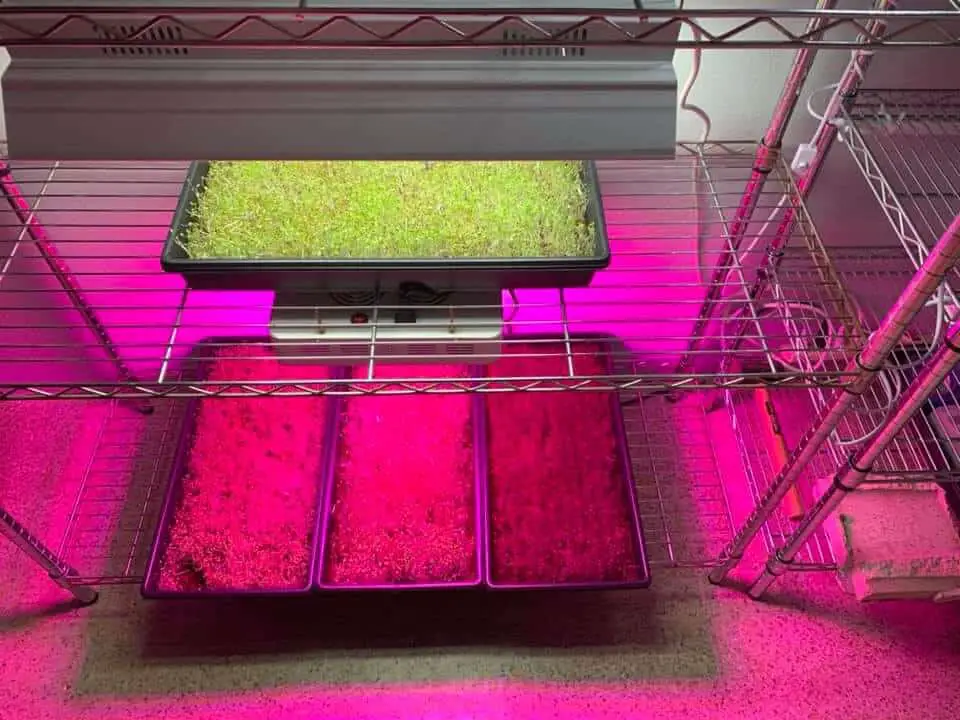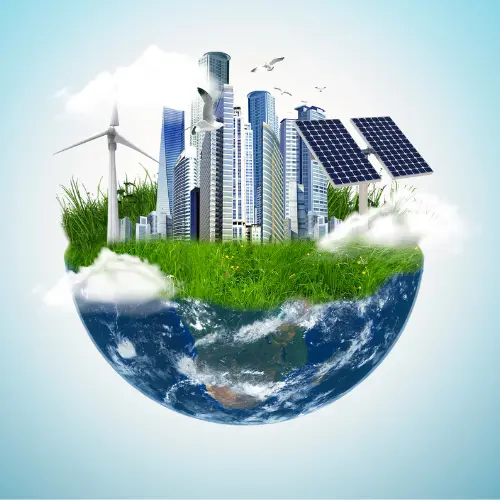You may have heard that grow lights need a ballast, but do all LED, HID, and fluorescent lights need a ballast? If you’re starting your first indoor planting, and have questions about lights, we have the answers!
Do LED grow lights need a ballast? No, LED grow lights do not need a ballast. However, they do require direct current (DC) and for most LED fixtures, this converter is built-in.
Read on to find out why LED lights do not need a ballast and more information about grow lights, in general. Depending on your indoor set up, you may want different features of lights for your indoor plants. This could also include whether other grow lights may be optimum for your plants and whether you will want lights with or without a ballast.
Do LED Grow Lights Need a Ballast?
LED lights do not need a ballast. They require a direct current, for which a converter is provided in most LED fixtures. Because of this feature, you can plug LED lights directly into a fixture and use your light for your indoor planting.
Why Do Other Lights Require Ballasts?
Grow light ballasts are an electrical support system mainly for HID grow lights. It is more of a safety regulation to prevent overheating, which inherently can cause fire. A ballast controls how much electricity is passed to your light. It controls the current output by increasing or decreasing, depending on what it needs.
For many lights, after the initial “start-up” when turned on, the solid that is melted to produce gas continues to stay in that condition without additional input of energy. When a ballast is used, the ballast takes control of regulating the power to the bulb soon after the first spark of light.
- Without a ballast, energy is continuously added, even though the light does not require this additional energy to stay on.
- With a ballast, this is controlled so that the required energy is provided, while the excess energy input is eliminated.
The Best LED Grow Lights
Finding the best LED grow lights for your indoor garden can be challenging, especially when you are a beginner. The following are highly-rated LED grow lights that you can use:
| Spectrum | Full-spectrum Red 630 and 660 nm, Blue 460nm, and White 2700K. No UV or Infrared. |
| Lifespan | 50000h |
| Average Power Draw | 12 to 20 watts |
| Hanging Height | 24 – 30 inches |
| Lighting Time | 16 hours a day |
| Spectrum | Full-spectrum |
| Lifespan | 50000h |
| Average Power Draw | 35 watts |
| Hanging Height | 36 – 40 inches |
| Lighting Time | 14-18 hours a day |
| Spectrum | Full-spectrum |
| Lifespan | 50000h |
| Average Power Draw | 36 watts for 300 output |
| Hanging Height | 12 – 32 inches |
| Lighting Time | 8-16 hours a day |
What is “Light” for Plants?
In general, plants need different types of light. Light is essential for plant photosynthesis, growth, and overall survival. They need the full spectrum of light overall, and different stages of growth require different wavelengths of light.
- Plants need more light from the blue side of the spectrum during seedling and foliage development.
- They require more light from the red side of the spectrum when blooming and fruiting.
Lumens vs PAR and YPF
When it comes to light, people often think about “lumens.” Although lumens are essential for understanding the efficiency, or the power, of a light source, it is actually not a crucial factor in determining the right light source for your plants.
For plants, they need the best combination of Photosynthetically Active Radiation (PAR) and Photosynthetic Photon Flux (PPF).
- PAR represents the number of photons between 400-700nm wavelength is emitted by a light source.
- PPF is a measure of the amount of light in the PAR zone that is produced in a second. PPF is information that helps you determine how many moles of PAR light is emitted to your plants and determines how many lamps you will need depending on your total growth area.
Different Types of Grow Lights
If you are looking for more budget-friendly options other than an LED light, you may consider regular light bulbs, HID, HPS, or compact fluorescent lights. Here is a brief overview of the popular selections for grow lights:
Light Emitting Diodes (LED)
LED provides a complete light spectrum of wavelengths ranging from 250nm to 1000nm. Most importantly, LED lights support all wavelengths for photosynthesis, which is a crucial factor in determining whether a light is a grow light or not.
LED also consume low energy while outputting high power, typically lasting 5000 hours. They are especially useful for providing light rays directly to plants without dispersion, which eliminates the need of using reflectors in the growth room.
Unfortunately, LED tends to come with a hefty price tag in comparison to other conventional grow lights. However, the price tags have been dropping thanks to higher volumes of manufacturing.
High-Intensity Discharge Lights (HID)
HID lights, commonly known as gas or discharge lights, require a ballast. They will not turn on at all without a ballast as a safety feature to prevent the use of a HID light without a ballast.
They are more budget-friendly but less powerful than LED lights. HID lights are still 10 times more efficient than traditional incandescent lights and more efficient in their photosynthetic value in comparison to HPS lights.
For small grow rooms, HID lights are not preferred and not typically the choice of most hobbyist growers.
High Pressure Sodium Lights (HPS)
HPS lights mostly emits light in the yellow to red range of the spectrum (565 to 700nm). They usually last around 10,000 hours and can burn at 25-30% efficiency. They do generate heat and become extremely hot, which requires them to be cautiously spaced away from developing foliage. Additionally, they require a ballast.
Unfortunately, because of its heavy emittance in the orange and red range of the spectrum, HPS is not optimum for seedlings and foliage (and general health of plants that require the full spectrum).
Compact Fluorescent Lights
Fluorescent lights are also commonly used, but do not come with fitted cooling systems. Additionally, fluorescent lights also require a ballast such as the HID and HPS lights. Fluorescent lights are commonly used as they are budget-friendly with low to medium light requirements.
To use fluorescent lights, you will need to keep a safe 6-8 inch distance between the bulb and the plant height.
How Long Should You Leave the Lights On?
Although LED lights are safe to function without a ballast, you need to turn off the lights at times for your plant’s sake. As a general rule, it is ideal to keep grow lights on for 12 to 18 hours, providing 6 to 8 dark hours for the plants.
These hours may vary depending on the type of plant you want to grow, but any plant under constant light may experience stress. This makes your plants susceptible to diseases, pests, and diseases.
To better understand the significance of light and dark for plants, the following is what happens for a plant during these individual times:
- During “sun” light, the plant converts the light to an energy source, which photosynthesis needs to survive.
- However, during night, the plant converts this energy to carbohydrates which are needed for later use.
Conclusion
There are many factors you can consider when selecting the right light, but with multiple choices of lights and different factors, you can use this guide to find the best light source for your plants. Because LED lights do not require a ballast, they may be easier to use – if you remember to turn them off!


